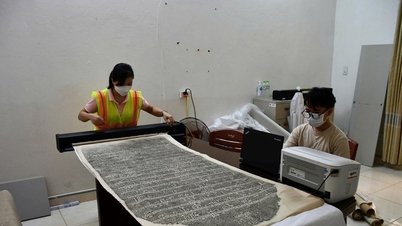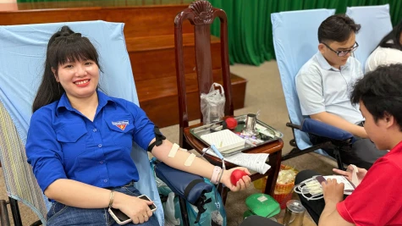A stroke occurs when blood flow to part of the brain is blocked or interrupted, preventing brain cells from receiving oxygen and nutrients.
This is a medical emergency that requires immediate treatment. Recognizing the symptoms of a stroke can help get help as soon as possible.
While stroke symptoms can seem to come on suddenly, in some cases there may be underlying warning signs that shouldn't be ignored, according to health news site Healthline .

15% of people experience a "warning headache" before a stroke
Photo: AI
Could there be warning signs days before a stroke occurs?
It's not always possible to predict a stroke, but some people may have warning signs that need attention.
Severe or unusual headache. Not all strokes have this symptom, but in some cases, a particular type of headache can be an early sign of an impending stroke.
A 2020 study of 550 participants found that 15% of people experienced a “warning headache” before a stroke. This headache, if present, usually occurred a week before the stroke. It was typically severe and different from any previous headaches. The headache began within 7 days before the stroke and usually lasted until stroke symptoms appeared, according to Healthline.
Researchers also found that people who experienced a "warning headache" before a stroke were more likely to have atrial fibrillation - a type of irregular heartbeat.
Transient ischemic attack (TIA). Another warning sign of stroke is a TIA, also known as a “mini-stroke.” A TIA occurs when the blood supply to part of the brain is briefly interrupted. Although the symptoms of a TIA can resemble those of a stroke, they usually go away within an hour. In some cases, symptoms can last up to 24 hours.
Although the symptoms of a TIA usually do not last long, medical attention is needed even if the symptoms disappear. Although a TIA usually resolves quickly, it can be a sign that a more serious stroke may occur later. About one-third of people who have a TIA will have a more serious stroke in the future.
Symptoms of a TIA. The symptoms of a TIA are similar to those of a stroke, but they usually disappear quickly. If you notice any of the following symptoms, seek medical attention immediately: Paralysis or weakness on one side of the body, usually in the face, arm, or leg; difficulty speaking or understanding; loss of balance or coordination, difficulty walking; trouble seeing in one or both eyes; confusion; headache; dizziness.
Seeking medical attention within 60 minutes of symptoms starting can help determine the cause of the TIA, allowing for prompt treatment, which can reduce the risk of future strokes.
According to research, up to 80% of stroke cases after transient ischemic attack (TIA) can be prevented if diagnosed and treated promptly.
In the case of an acute stroke, getting emergency care within three hours of symptom onset results in better outcomes with fewer long-term problems, according to Healthline.
Source: https://thanhnien.vn/2-dau-hieu-canh-bao-truoc-con-dot-quy-biet-duoc-co-the-cuu-mang-ban-185250717210224338.htm





![[Photo] Cat Ba - Green island paradise](/_next/image?url=https%3A%2F%2Fvphoto.vietnam.vn%2Fthumb%2F1200x675%2Fvietnam%2Fresource%2FIMAGE%2F2025%2F12%2F04%2F1764821844074_ndo_br_1-dcbthienduongxanh638-jpg.webp&w=3840&q=75)























































![[VIMC 40 days of lightning speed] Da Nang Port: Unity - Lightning speed - Breakthrough to the finish line](https://vphoto.vietnam.vn/thumb/402x226/vietnam/resource/IMAGE/2025/12/04/1764833540882_cdn_4-12-25.jpeg)















































Comment (0)